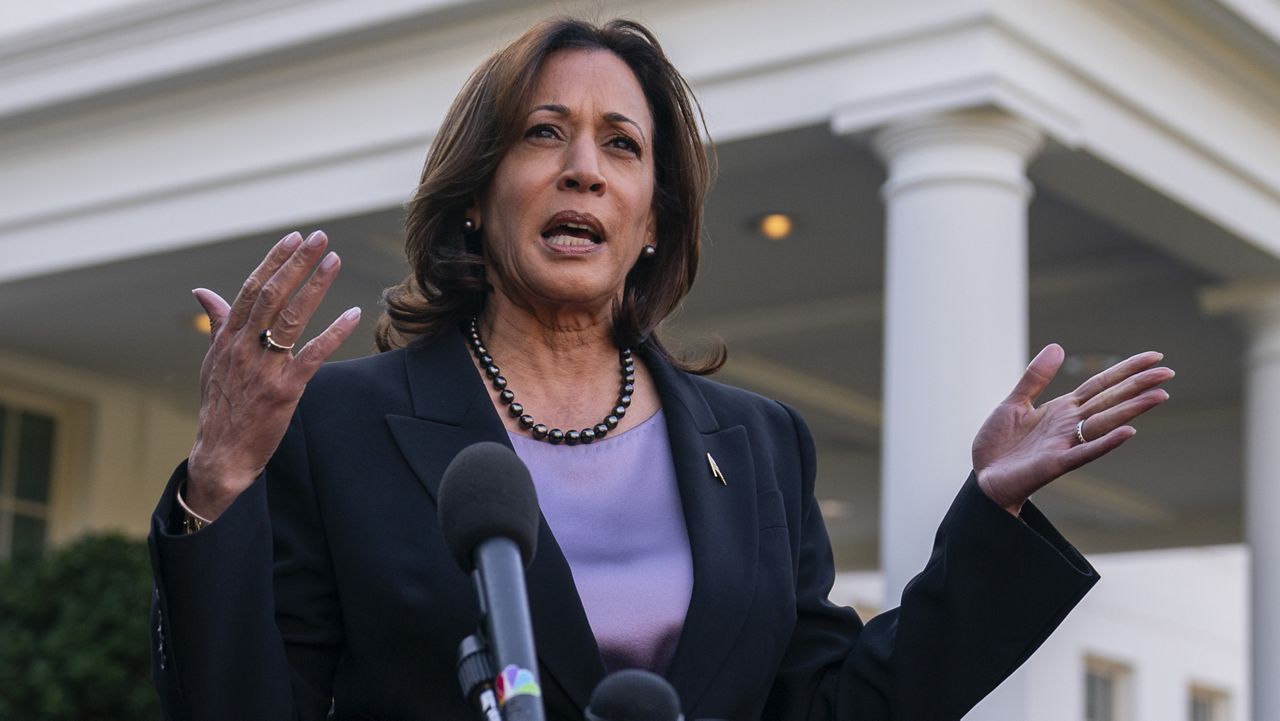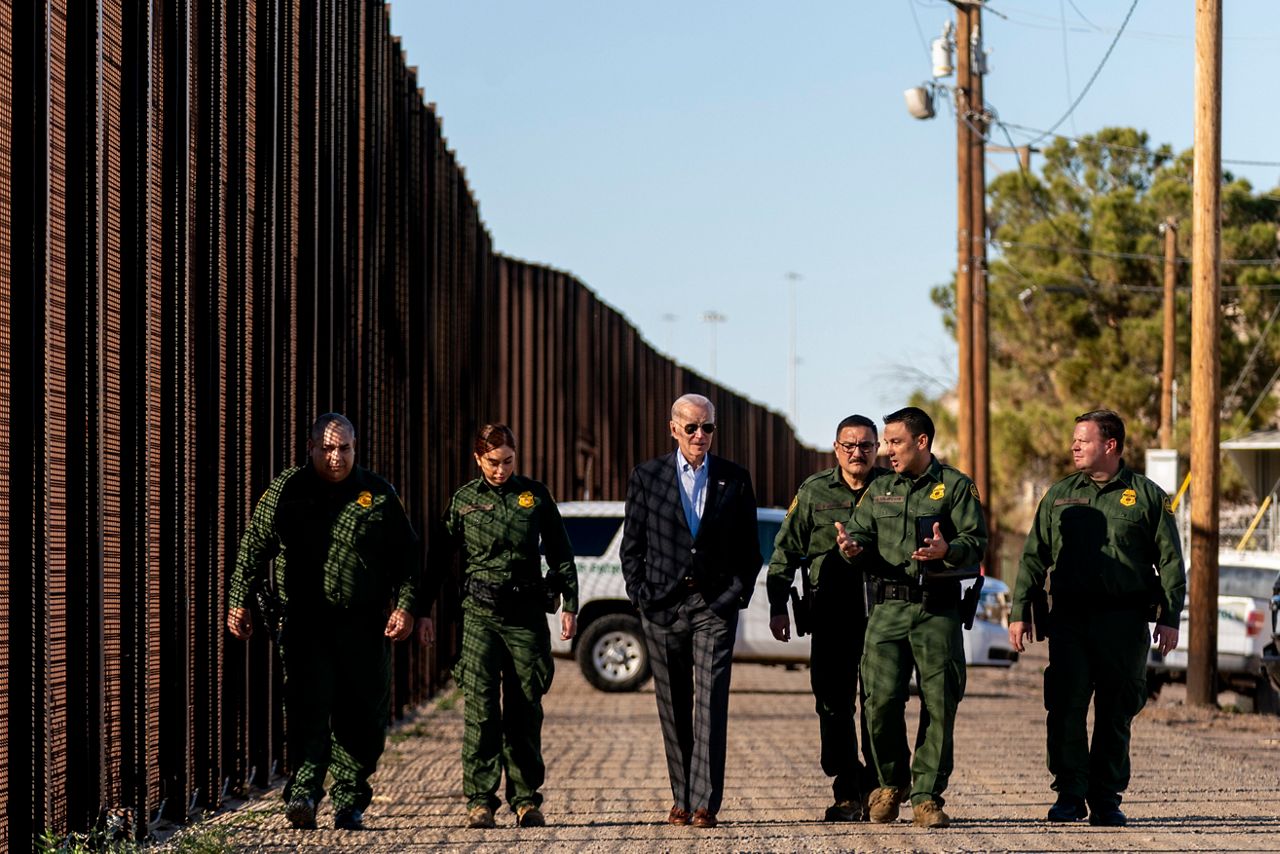The Biden administration has sent to Congress its after-action report on the U.S. withdrawal from Afghanistan, including the attack at the Kabul airport in August 2021 that left 170 Afghans and 13 U.S. service members dead.
What You Need To Know
- The Biden administration has sent to Congress its after-action report on the U.S. withdrawal from Afghanistan, including the attack at the Kabul airport in August 2021 that left 170 Afghans and 13 U.S. service members dead
- The classified report, sent to members of Congress on Thursday, details the poor hand the Biden administration felt they were dealt by their immediate predecessors, as well as what went into the decision to withdraw by August 2021 and how the president and military responded to the deadly attack on Abbey Gate at the Kabul airport
- Much of the first three pages of a declassified memo summarizing the report are dedicated to the Biden administration’s frustrations with the lack of communication and planning from the Trump administration between the 2020 election and Biden’s inauguration
- For the failures of the evacuation, the U.S. government spread the blame in the report between the faulty intelligence in an intense environment, the Trump administration’s planning and lack of coordination, and the Afghan government and military’s quick defeat by Taliban forces
“The president’s decision to end the war in Afghanistan was the right one,” Pentagon spokesperson John Kirby said at a White House press briefing Thursday. “The United States had long ago accomplished its mission to remove from the battlefield the terrorists who attacked us on 9/11.”
“Does that mean everything went perfect in that evacuation? Of course not,” Kirby later added, after boasting of the success of what he described as “the largest airlift evacuation in military history.”
Kirby touted the fact that more than 124,000 people were evacuated by U.S. forces.
The classified report, sent to members of Congress on Thursday, details the poor hand the Biden administration felt they were dealt by their immediate predecessors, as well as what went into the decision to withdraw by August 2021 and how the president and military responded to the deadly attack on Abbey Gate at the Kabul airport.
“We must make sure that their legacy is never forgotten,” Kirby said, referring to the U.S. personnel across all agencies who helped orchestrate the evacuation. “They ended our nation's longest war. That was never going to be an easy thing to do.”
“As the president himself has said, it was never going to be low-grade or low-risk or low-cost,” he added. “We should be humble enough to let that also be a key lesson learned from Afghanistan.”
The reviews from the State Department and the Pentagon were conducted by internal, independent agencies before being reviewed by Secretary of State Antony Blinken and Secretary of Defense Lloyd Austin, as well as the National Security Council and other agencies, Kirby said, without getting into the specifics of the independent entities that initiated the report.
The administration made public a 12-page declassified memo summarizing the report, which was authored by the National Security Council with input from Biden himself, Kirby said.
The long-anticipated report was announced without public warning and ahead of a holiday weekend, though Kirby took questions from the White House podium for over an hour Thursday.
“What you're seeing today is the result and the culmination of an awful lot of work and no effort here to try to obfuscate or try to bury something. It's an effort to try to be as open, as transparent as we can be,” Kirby said. “I'll tell you this, you got questions after the briefing today? I'll stay here as long as you want. You got questions after the briefing today? You know how to get a hold of me. We'll answer whatever you have.”
Transition between administrations and the withdrawal deadline
Much of the first three pages of the declassified memo are dedicated to the Biden administration’s frustrations with the lack of communication and planning from the Trump administration between the 2020 election and Biden’s inauguration.
“President Biden’s choices for how to execute a withdrawal from Afghanistan were severely constrained by conditions created by his predecessor,” according to the memo. “During the transition from the Trump Administration to the Biden Administration, the outgoing Administration provided no plans for how to conduct the final withdrawal or to evacuate Americans and Afghan allies.”
Despite repeated requests, the Trump administration did not supply withdrawal plans to the Biden transition team after the 2020 election, Kirby said, leaving the new administration to essentially start from scratch.
The Taliban, with whom former President Donald Trump had negotiated a May 2021 total withdrawal, “were in the strongest military position that they had been in since 2001, controlling or contesting nearly half of the country” when Biden took office, the memo read, noting Trump had wound down American troop presence to 2,500.
After floating a meeting at Camp David with Taliban leaders on the 18th anniversary of the 9/11 attacks, Trump’s administration reached a deal known as the “Doha Agreement” with the Taliban in February 2020 without input from the Afghan government. The deal required U.S. and allied troops to withdraw from the country within 14 months in exchange for the Taliban engaging in peace talks and refraining from attacking the U.S. and allied personnel.
The agreement also required the release of 5,000 Taliban fighters from imprisonment in exchange for 1,000 prisoners of the Taliban. Ultimately, the Afghan government and the Taliban completed the exchange in September 2020.
“We spent quite a bit of time after coming into office, and I remember this quite clearly, trying to get our hands around the Doha Agreement and really understanding all its articles and what it meant and how it was being interpreted by the Taliban,” Kirby said, expressing frustrations the previous administration was not forthcoming to their successors.
U.S. troop presence in Afghanistan rose to 13,000 under Trump, after entering office with 10,000 service members in the country, according to the memo. After the Doha Agreement, the Trump administration reduced that number to 8,600 by June 2020. In September of that year, he ordered another reduction to 4,500 and then tweeted in October that all remaining troops should be “home by Christmas!”
“On 11 November 2020, I received an unclassified, signed order directing the United States military to withdraw all forces from Afghanistan no later than 15 January 2021,” Milley testified to Congress in September 2021. The order, issued a week after the 2020 presidential election, was later rescinded and a cap of 2,500 troops by Jan. 15, 2021 was implemented.
Once in office, Biden requested military leaders assess his options, including delaying the May withdrawal deadline into the summer, according to the memo. U.S. intelligence agencies concluded keeping 2,500 troops in the country beyond that would require further reinforcements to handle the inevitable conflict with the Taliban, who only agreed to stop attacking U.S. military personnel if the United States committed to the withdrawal.
“There’s a reasonable prospect we would have to increase forces past 2,500, given the Taliban very likely was going to start attacking us,” General Mark Milley, the chair of the Joint Chiefs of Staff, testified to Congress in September 2021.
The report concludes “more Americans at risk in Afghanistan” was unlikely to drastically change the situation, according to the memo.
Instead, the consensus in early 2021 between U.S. military and intelligence leaders was that the Afghan military would “be able to effectively fight to defend their country and their capital, Kabul” and Taliban gains in the country would accelerate only after the U.S. military’s complete withdrawal, the memo reads.
The collapse of the Afghan government and military
Military and intelligence agencies apparently believed the Afghan military would be well-equipped to take on the Taliban with a troop advantage of 220,000, including “an air force and two decades of training and support.”
“As late as May 2021, the assessment was still that Kabul would probably not come under serious pressure until late 2021 after U.S. troops departed,” the memo said.
Instead, by early August, the Taliban began capturing provincial capitals. By Aug. 13 and 14 of 2021, Taliban fighters began threatening Kabul, according to the Pentagon. Officials were concerned, but didn’t want the evacuation to hasten the collapse of Afghanistan’s western-backed government led by President Ashraf Ghani, Kirby said.
“No agency predicted a Taliban takeover in nine days,” Kirby said. “No agency predicted the rapid fleeing of President Ghani, who had indicated to us his intent to remain in Afghanistan up until he departed on the 15th of August. And no agency predicted that the more than 300,000 trained and equipped Afghan national security and defense forces would fail to fight for the country. Especially after 20 years of American support.”
A February 2023 watchdog report from the military’s Special Inspector General for Afghanistan Reconstruction concluded the decision to withdraw “destroyed the morale of Afghan soldiers and police.”
The Afghan National Defense and Security Forces “had long relied on the U.S. military’s presence to protect against large-scale ANDSF losses, and Afghan troops saw the United States as a means of holding their government accountable for paying their salaries,” the SIGAR report read. “The U.S.-Taliban agreement signed under the Trump administration in 2020 made it clear that this was no longer the case, resulting in a sense of abandonment within the ANDSF and the Afghan population.”
The SIGAR report also noted a decrease in U.S. airstrikes left the ANDSF “without a key advantage” in their fight against the Taliban ahead of the U.S. withdrawal.
In response to the rapid Taliban gains in early August 2021, Biden ordered additional troops into the country to assist with the evacuation.
Within 72 hours, the U.S. military had captured Hamid Karzai International Airport in Kabul to begin evacuations. Embassy employees and their families, roughly 2,500 people, were evacuated, the administration said.
“To manage the potential threat of a terrorist attack, the President repeatedly asked whether the military required additional support to carry out their mission at HKIA,” the memo reads. “Senior military officials confirmed that they had sufficient resources and authorities to mitigate threats, including those posed by” the Islamic State’s Khorasan Province, the terrorist group’s Afghanistan branch.
Attack on Abbey Gate
On Aug. 25, “the entire national security team, including senior military officials,” backed the decision to continue evacuations despite increasing risks, according to the memo.
The next evening in Kabul — as U.S. forces assisted the evacuation United Kingdom military personnel and Afghan partners of Western governments — a suicide bomber, believed to be connected to ISIS-K, set off an explosion outside the airport’s Abbey Gate killing the 13 U.S. service members and 170 Afghans, as well as injuring 45 other service members and an unreported number of Afghans, according to the Pentagon.
“The president and the first lady will always honor the sacrifices of the 13 service members who were killed in that attack. And we will never forget their families. We will mourn with them,” Kirby said Thursday. “We mourn as well the loss of those Afghans killed by that suicide bomber on that day, and others who lost their lives during the withdrawal.”
After the attack, Biden considered ending the evacuation immediately, but was consulted by his senior military advisors to continue evacuations until Aug. 31.
The memo and Kirby offered few details on the intelligence U.S. officials were looking at in the leadup to the attack, only noting the Department of Defense conducted a review and “implemented their lessons learned.”
In response to the attack, the U.S. launched a drone strike in a province east of Kabul that killed two “high profile ISIS-K individuals” on Aug. 27.
Then on Aug. 29, responding to faulty intelligence, the U.S. military launched a drone strike that “mistakenly killed ten civilians,” the Pentagon wrote. The man targeted, an Afghan aid worker employed by a U.S. NGO, was killed alongside seven children. He was delivering containers of water to his family, his former employer claims and a New York Times analysis of drone footage and interviews with family members concluded.
For weeks officials, including Milley, initially said the man was a member of ISIS. Finally, on Sept. 17, the Pentagon admitted they were wrong.
“I am now convinced that as many as 10 civilians including up to seven children were tragically killed in that strike. Moreover, we now assess that it is unlikely that the vehicle and those who died were associated with ISIS-K or were a direct threat to U.S. forces,” Gen. Kenneth McKenzie, commander of U.S. Central Command, said at the time. Central Command oversaw American military operations in Afghanistan since the 2002 invasion. “I offer my profound condolences to the family and friends of those who were killed.”
For the failures of the evacuation, the U.S. government spread the blame in the report between the faulty intelligence in an intense environment, the Trump administration’s planning and lack of coordination, and the Afghan government and military’s quick defeat by Taliban forces.
Ultimately, Kirby said, the president and his administration were proud.
“Proud of the fact that we got more than 124,000 people safely out of Afghanistan? You bet,” Kirby said. “Proud of the fact that American troops were able to seize control of a defunct airport and get it operational in 48 hours? You bet. Proud of the fact that we now have about 100,000 Afghans, our former allies and partners living in this country? You bet.”
“Nobody's saying that everything was perfect. But there was a lot that went right,” Kirby continued. “There’s a lot to be proud of.”







)

